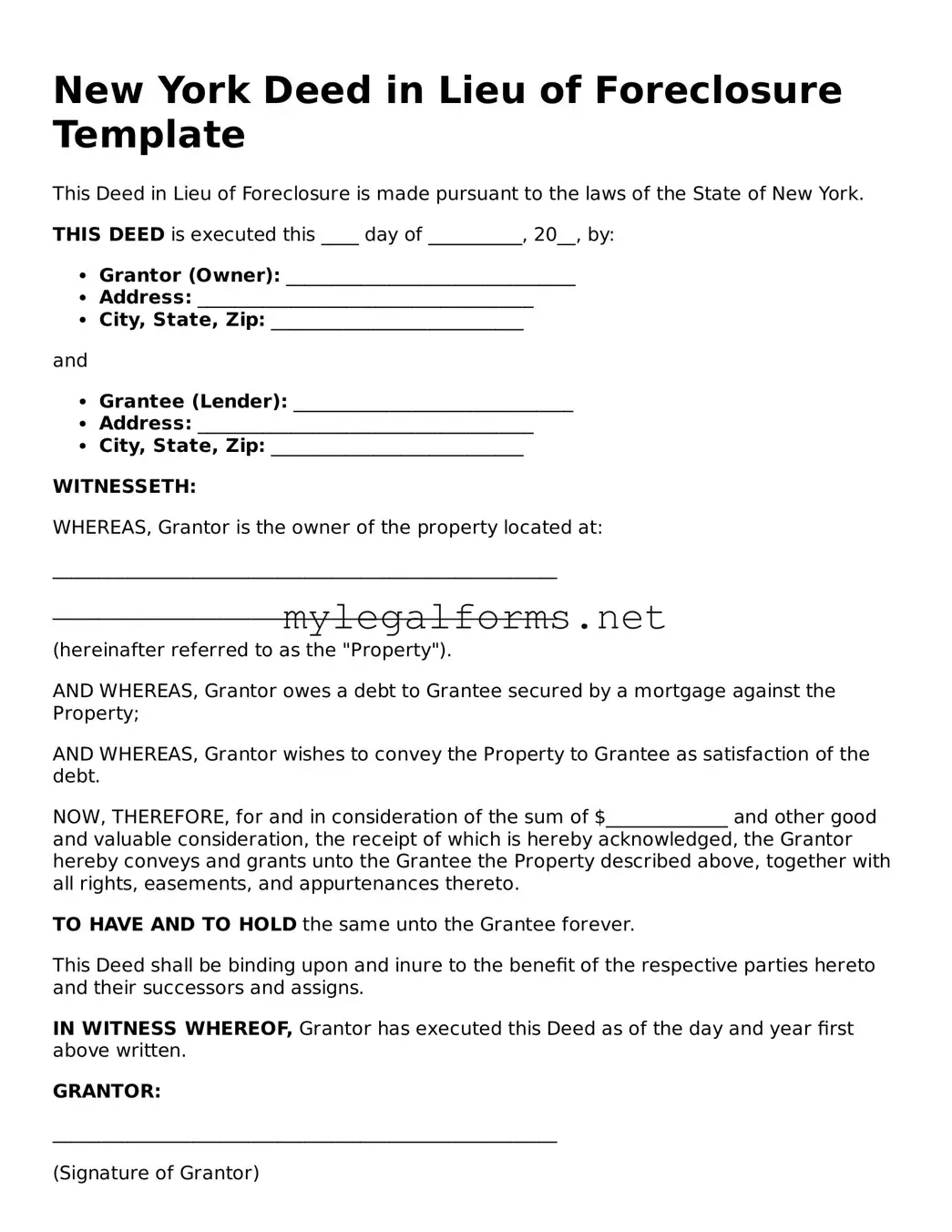New York Deed in Lieu of Foreclosure Template
This Deed in Lieu of Foreclosure is made pursuant to the laws of the State of New York.
THIS DEED is executed this ____ day of __________, 20__, by:
- Grantor (Owner): _______________________________
- Address: ____________________________________
- City, State, Zip: ___________________________
and
- Grantee (Lender): ______________________________
- Address: ____________________________________
- City, State, Zip: ___________________________
WITNESSETH:
WHEREAS, Grantor is the owner of the property located at:
______________________________________________________
______________________________________________________
(hereinafter referred to as the "Property").
AND WHEREAS, Grantor owes a debt to Grantee secured by a mortgage against the Property;
AND WHEREAS, Grantor wishes to convey the Property to Grantee as satisfaction of the debt.
NOW, THEREFORE, for and in consideration of the sum of $_____________ and other good and valuable consideration, the receipt of which is hereby acknowledged, the Grantor hereby conveys and grants unto the Grantee the Property described above, together with all rights, easements, and appurtenances thereto.
TO HAVE AND TO HOLD the same unto the Grantee forever.
This Deed shall be binding upon and inure to the benefit of the respective parties hereto and their successors and assigns.
IN WITNESS WHEREOF, Grantor has executed this Deed as of the day and year first above written.
GRANTOR:
______________________________________________________
(Signature of Grantor)
WITNESS:
______________________________________________________
(Signature of Witness)
STATE OF NEW YORK
COUNTY OF ______________
On this ____ day of ___________, 20__, before me, a Notary Public in and for said State, personally appeared _________________________________, known to me (or satisfactorily proven) to be the person whose name is subscribed to the within instrument, and acknowledged that they executed the same for the purposes therein contained.
IN TESTIMONY WHEREOF, I have hereunto set my hand and affixed my official seal the day and year in this certificate first above written.
______________________________________________________
(Notary Public)
